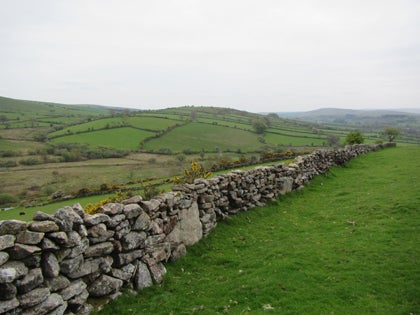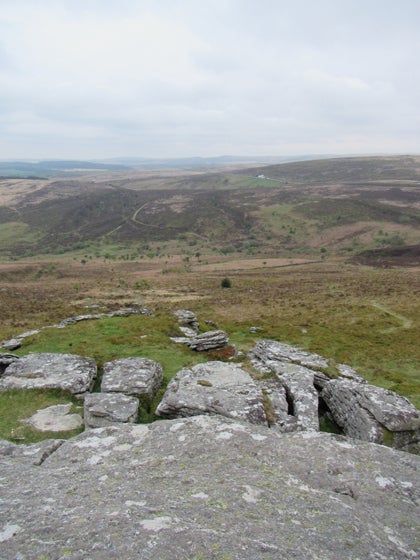Canon PowerShot D30 Review
Canon PowerShot D30 Review
Canon PowerShot D30 Review - Canon's latest waterproof compact follows on from some impressive predecessors, but can it match their performance both in and out of the water?
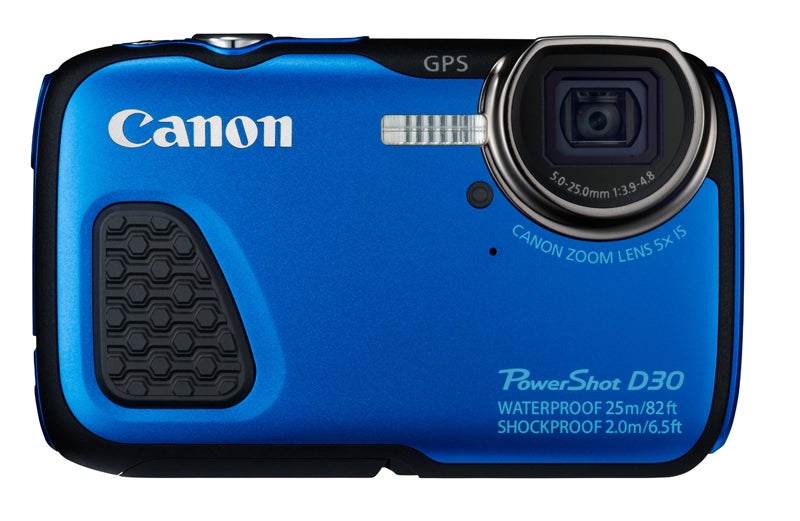
Verdict
Pros
- Style; Build quality; Performance
Cons
- Outdated features; Lens quality
Key Specifications
- Review Price: £260
Although they are now fairly common, waterproof digital cameras are a relatively new idea, with the first example, the Pentax WP being launched in 2005.
For a long time, if you wanted a waterproof camera Pentax and Olympus were the only choices, but then about three years ago the other big-name brands decided to get in on a growing market, and now all the main manufacturers have “adventure cameras” in their ranges, with some of them on their fifth or sixth generations.
It’s surprising therefore that the usually prolific Canon has only just launched its third waterproof camera, the D30.
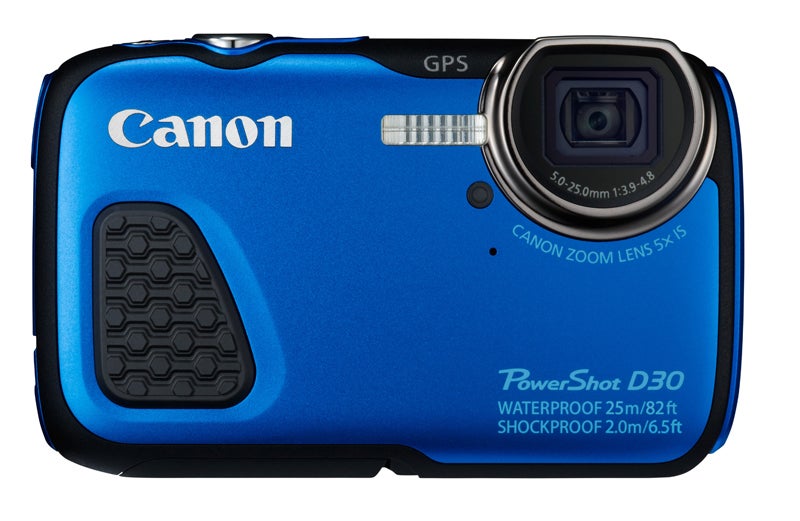
Canon PowerShot D30 Review – Features
When considering the PowerShot D30’s features you are struck with a sense of déjà vu, and with good reason. The D30 is essentially just Canon’s 2012 PowerShot D20 in a new body.
It has exactly the same 12.1MP BSI CMOS sensor, the same 5x zoom 28-140mm lens, the same 3in, 461k monitor, and even the same DIGIC 4 processor, when most of the rest of Canon’s range has by now moved on the faster DIGIC 6 chip.
The extra features are also familiar; it has built-in GPS, full HD video recording and Canon’s excellent Intelligent IS optical image stabilisation. Since it is a two-year-old camera in a new body it does lack a few modern features, such as Wi-Fi and Smartphone connectivity.
There’s nothing particularly bad about this product recycling; the D20 was a good camera with decent image quality, a good range of features and excellent performance, but simply re-packaging it and flogging it as a new camera is disappointing, especially when it costs as much as the PowerShot D30.
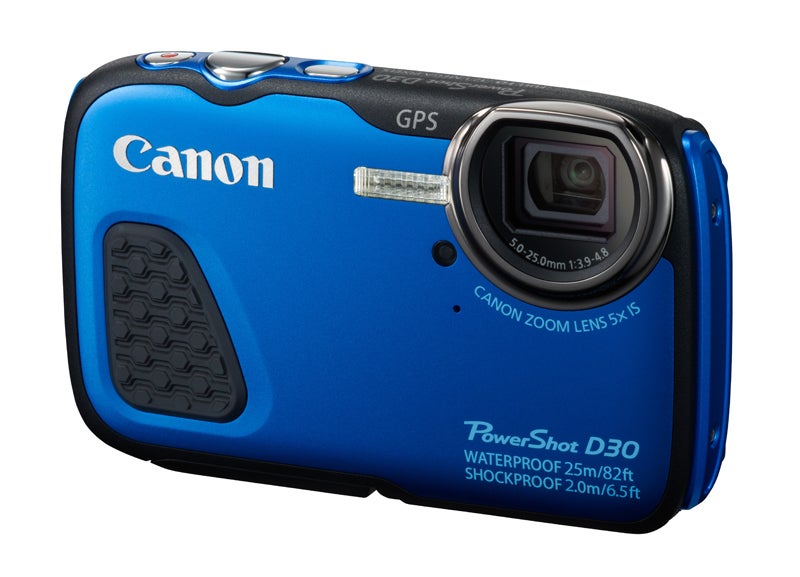
Too deep?
The main difference between the D20 and the D30 is the depth at which it can be used. The D20 could be used at depths of 10m (and survive drops from 1.5m), making it a good choice for water-sports and casual snorkelling.
The D30 can survive at depths of up to 25m (and drops of 2.0m), while although good for scuba divers, the casual user will not feel its benefit.
25m (82ft) is well beyond snorkelling depth; if you’re diving to that sort of depth you’ll need to be using SCUBA gear. With basic PADI recreational diving certification you can dive to 40m using standard air tanks, and if you like to take photos at that depth you’ll probably be using one of the many neutral-buoyancy dive-rated cases that are available for a wide range of popular digital cameras, including ones made by Canon.
Canon PowerShot D30 Review – Design
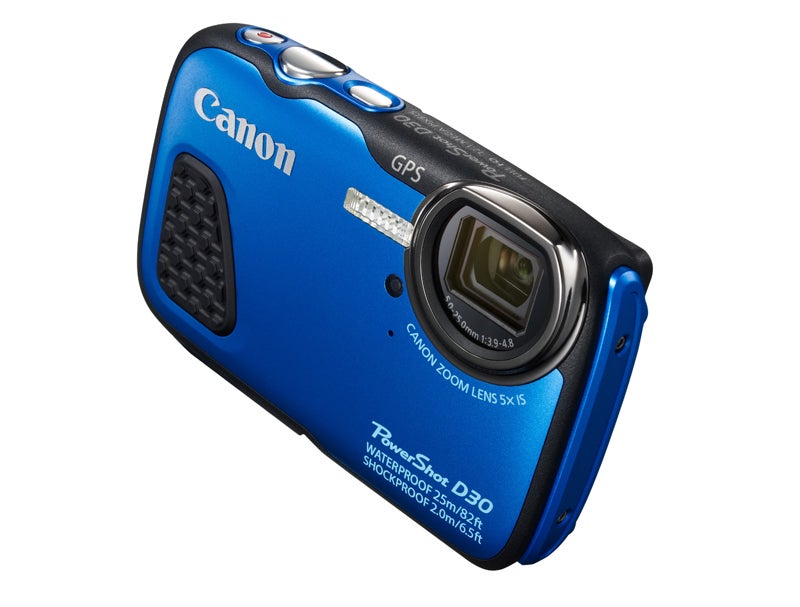
For all of its finer qualities there’s no denying that the D20 did look a bit odd, with a peculiarly-shaped body designed to resemble a fish, and a selection of cosmetic exposed hex-key bolt heads, included presumably to appeal to people who think that outdoor equipment has to look like military hardware.
The styling of D30 is a lot more conservative. The shape is a simple rounded rectangle with a flatter top panel than the D20, which makes the camera a lot easier to grip and use one-handed, a useful consideration if your other hand is holding your kayak paddle or the handlebars of your jet ski.
Despite the lack of improvement of the internal components, the new case does have some nice design touches. It is slightly smaller and lighter than the D20, thanks to the more sensible shape, and the body now incorporates heavily textured grips on both front and rear.
As before the body is made mostly of solid high-density plastic with a façade of aluminium, but where the D20 was available in a range of colours, the D30 is only available in blue.
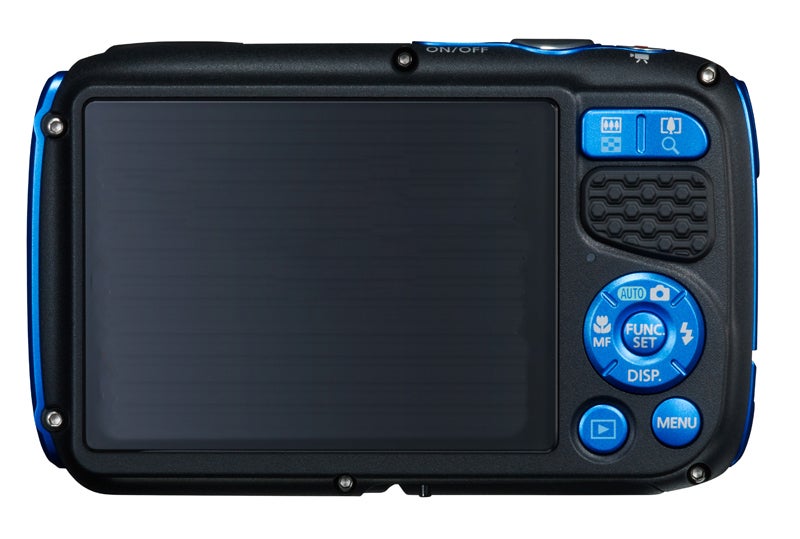
Controls
The control layout has changed slightly from the D20. The quick-start video recording button has swapped places with the playback button and is now found on the top panel next to the shutter button, which is a more sensible location.
The other controls are also more sensibly designed. As noted above they’re still too small and fiddly to be operated while wearing gloves, but they are at least easy to use with bare hands.
Canon PowerShot D30 Review – Performance
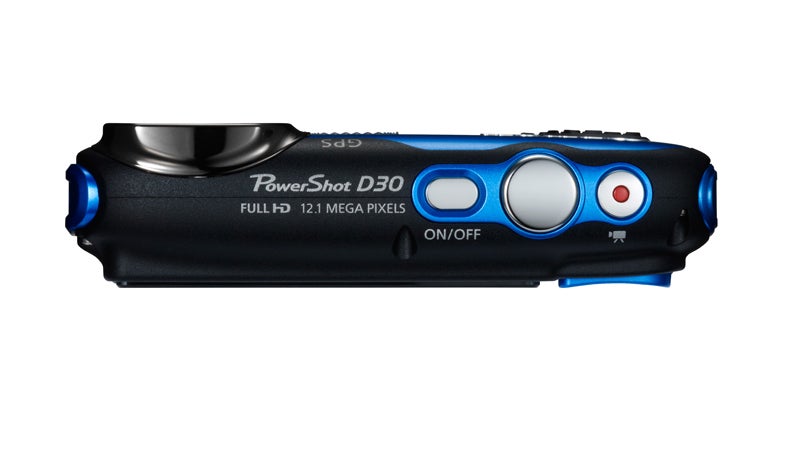
The D30’s performance is, not too surprisingly, almost identical to the D20.
From a cold start it can power up, focus and take a picture in approximately two seconds, which is nice and quick. In single-shot mode it has a shot-to-shot time of approximately two seconds, while in continuous shooting mode it can manage approximately one frame a second, which is a little slow by recent standards.
Focusing is fast and accurate in good light, but does slow down by about half a second in low light. It has a bright amber AF assist lamp which has a range of about four or five meters, so it can focus in the dark.
As usual the Canon AiAF multi-zone autofocus system seems to have a mind of its own and often focuses on the background rather than the main subject, but the centre-zone AF is more reliable.

Flash and GPS
The flash is a bit weaker than I would have expected on an outdoor-oriented camera, with a maximum range of only 3.5m. It charges reasonably quickly though, cycling in approximately seven seconds under typical use.
The D30 has a built-in GPS receiver to automatically geo-tag your pictures. I’m not usually a big fan of these; most that I’ve tried have been battery-draining white elephants that don’t even work half the time.
The D30’s GPS does appear to work quite well though, picking up a satellite lock within a minute or so and accurately recording position to within a couple of metres. If GPS on your camera would be a useful feature for you, then this is one of the few good ones.
Canon PowerShot D30 Review – Image Quality
The D30’s overall image quality is also very similar to that of the D20, not too surprising since it has the same lens, sensor and processor.
Colour and White Balance
As is usually the case with Canon cameras the colour reproduction in the default setting is very neutral, which can look a little bit under-saturated in the final print.
However switching to the more saturated Vivid colour mode produces richer, more lively colours that look a lot nicer. Automatic white balance is excellent as usual, coping well with everything from a slightly hazy spring day to mixed indoor lighting.
Exposure
Exposure metering is also very good, coping well with strong back-lighting, low light and bright colours. Dynamic range is a bit limited by recent standards, clipping some highlights and losing a bit of shadow detail, but it’s not bad for a small-sensor compact.
Resolution
The D30 has only 12.1-megapixels resolution, compared with the current norm for mid-range compacts, which is more like 16 megapixels. 12MP is still pretty decent though, and is more than capable of a good A3 print, although the claimed A2 print size is a bit of a stretch.
The lens quality isn’t really high enough to make use of a higher resolution sensor, and most buyers are only going to use the D30 for snapshots anyway, so this is no real disadvantage.
Image Noise
Unlike the majority of recent compacts, which have maximum ISO settings of 6400, the D30 only goes up to 3200. Image quality at the maximum setting is pretty good, with some noise in darker areas and a little colour distortion, but on the whole decent detail and contrast.
At lower settings the noise control is excellent, with virtually no noise at all up to 800 ISO.
Lens Performance
The only weak link in the image quality chain is the lens. Like a lot of vertically-mounted “periscope” lenses it suffers from a number of optical problems, including blurring and chromatic aberration towards the corners of the frame, barrel distortion at wide angle, and a general softness that rod images of some fine detail.
The position of the lens also makes it vulnerable to finger marks and other dirt on the glass cover, which is easy to overlook and will further degrade image quality.
Canon PowerShot D30 Review – Verdict

The Canon PowerShot D30 is really just the two-year-old D20 in a new body. It lacks a number of useful features found on more recent cameras, such as a higher resolution sensor, wireless connectivity options and advanced GPS features.
While its performance and image quality still hold up, it is surpassed in most other respects by newer and often cheaper cameras from other brands.
Its extra 25m diving depth, seven metres deeper than its nearest competitor and very impressive on paper, is actually not much of an advantage in the real world, since it can’t really hope to compete with a dedicated diving cameras.
It’s a good-looking camera, with nice handling and some good features, but at the asking price it is simply not very good value when compared to its rivals.
Canon PowerShot D30 Review – Sample Image Gallery
These are just a selection of sample images captured with the PowerShot D30. For a wider range of images, head on over to the Canon PowerShot D30 review sample image gallery.
Trusted Score
Score in detail
-
Value 8
-
Design 9
-
Features 8
-
Image Quality 9
-
Performance 9



